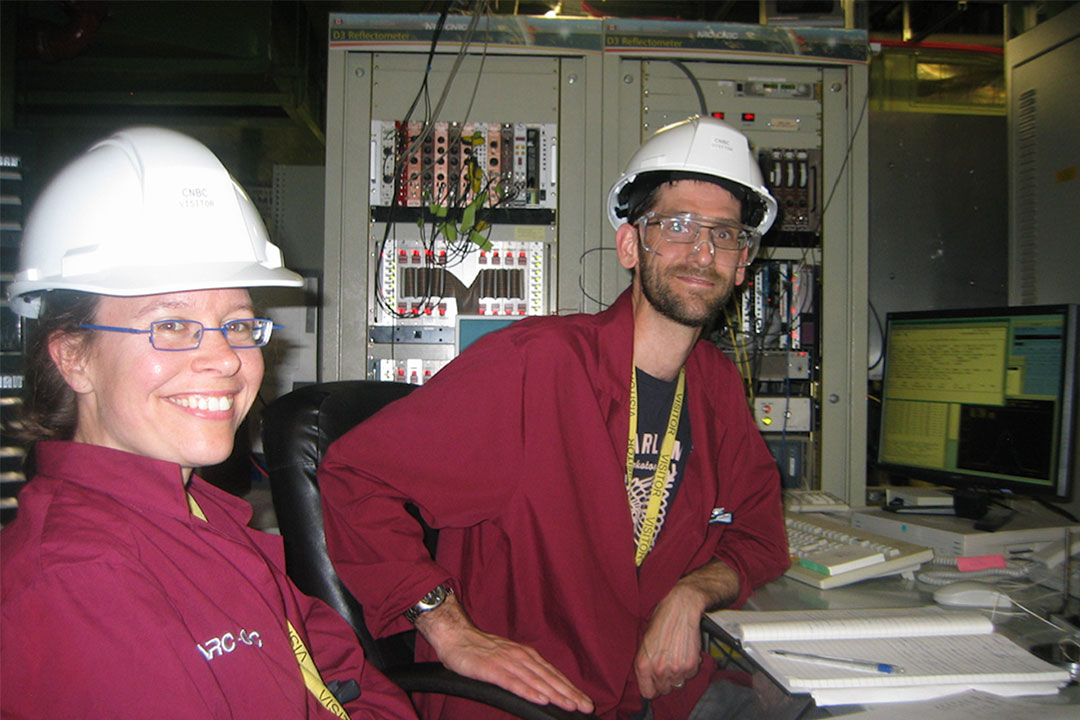
University-led group urges plan to address Canada’s looming shortage of neutron beams for materials research
A non-profit group of Canadian university and industry researchers says Canada must act now or it will lose access to a critically important scientific tool—neutron beams—when the National Research Universal (NRU) reactor at Chalk River closes in March of 2018.
While it’s well known that NRU is a world supplier of an important medical isotope, what isn’t as well known is that more than 800 scientists, engineers, and students from Canada and abroad have participated in research projects over the past five years that depend upon neutron beams from the NRU’s Canadian Neutron Beam Centre.
Neutron beams reveal nanometre-scale details about molecular structures that cannot be seen with other scientific tools. The many diverse applications range from clean energy technologies to medical device coatings to development of light-weight alloys to make cars and airplanes more energy-efficient.
In a recent submission to the House of Commons Finance Committee, the Canadian Neutron Initiative (CNI)—led by University of Saskatchewan and McMaster University—is calling for federal investment in a national program that will retain the country’s capacity for materials research with neutron beams beyond March of 2018. The CNI estimates that researchers from more than 30 Canadian universities currently use Canada’s neutron beams to carry out their work.
“Once that research capability is lost, it would be difficult to regain, and would mean a loss of knowledge for the next scientific breakthroughs in materials science and related new commercial technologies,” said Karen Chad, Vice-President of Research at University of Saskatchewan. “We need to plan now how to train students for these highly skilled careers and retain our experts so that Canada can remain on the leading edge of science and technology in the coming decade.”
The CNI calls for a 10-year investment to provide access for Canadian researchers to leading neutron-beam facilities around the world and in university-based capabilities including upgrades to the McMaster Nuclear Reactor to enable it to support a much larger portion of Canada’s neutron user community.
“We are proposing to establish a new framework that makes the most of our domestic capabilities, while building partnerships with world-leading neutron-beam facilities abroad,” says Robert Baker, Vice-President of Research at McMaster University. “This will enable Canadian researchers, students and industry to have continued access to this valuable and versatile tool.”
The CNI estimates that the recommended initiatives would cost about $24 million over the next three years, following by an investment from 2021 to 2029 of about $19 million per year. The CNI notes that this is considerably less than the more than $100 million per year that the federal government has been spending in years on the NRU reactor.
Neutrons are penetrating but non-destructive and can be used to examine most materials. Knowledge generated using neutrons complements the work done at national science facilities such as the Canadian Light Source at the U of S and the TRIUMF lab in B.C.
“Canada has been a world leader in this field for over half a century, with Canadian neutron-beam research contributing to two Nobel prizes in the last 25 years,” said Baker.
McMaster physicist Bertram Brockhouse was co-winner of the 1994 Nobel Prize and Bill Buyers of the Canadian Neutron Beam Centre contributed to the research by three American scientists honored by the 2016 Nobel Prize.
-30-
Background
About neutron beams
Neutrons are subatomic particles that researchers use to peer inside the molecular and nano-scale structures that make up materials. Canadians apply neutron beams for scientific exploration and technology development in areas such as health and food security, production and storage of clean energy, conversion of vehicles to clean technologies, and advanced manufacturing methods for cars and airplanes.
Just as beams of light are used in a microscope to learn about materials on a micrometre scale, beams of neutrons reveal nanometre-scale details about materials’ molecular structures and motions that cannot be seen with other scientific tools – details that are critical to how materials perform. Examples of research success stories are available here.
About the NRU reactor
The shutdown of Atomic Energy of Canada Ltd.’s (AECL) NRU reactor at Chalk River in March 2018 was announced by the Government of Canada in February 2015. In addition to supplying neutron beams, the NRU reactor has been the primary testing facility for Canada’s nuclear power industry, and was a major world supplier of an important medical isotope, Molybdenum-99, up to October 2016.
About the Canadian Neutron Initiative
The Canadian Neutron Initiative is led by the University of Saskatchewan, McMaster University, the Canadian Nuclear Association, and the Canadian Institute for Neutron Scattering. The Canadian Neutron Initiative (CNI) is intended to establish a new framework for leadership, management and funding of Canada’s capacity for materials research with neutron beams, building on existing national and international resources. The new framework will ensure Canadians can access neutron beams as part of their complete set of tools for participating at the leading edge of science and technology for maximum global benefit, in decades to come.
For more information, please contact:
John Root
Executive Director
Sylvia Fedoruk Canadian Centre for Nuclear Innovation
613-584-8297
John.root@fedorukcentre.ca
Wade Hemsworth
Manager, Media Relations
McMaster University
905-525-9140, ext. 27988
hemswor@mcmaster.ca,

